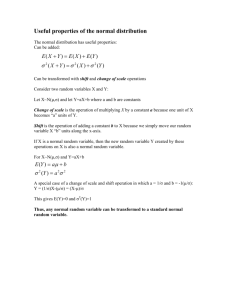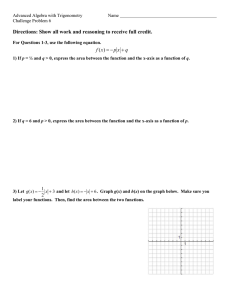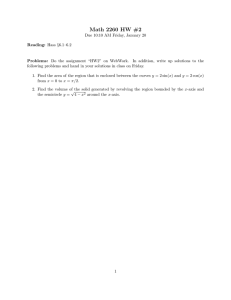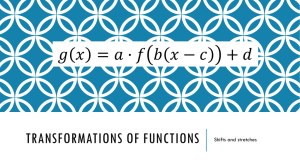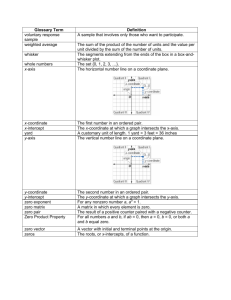Activity 5.3 Vertical Stretches and Compressions
advertisement
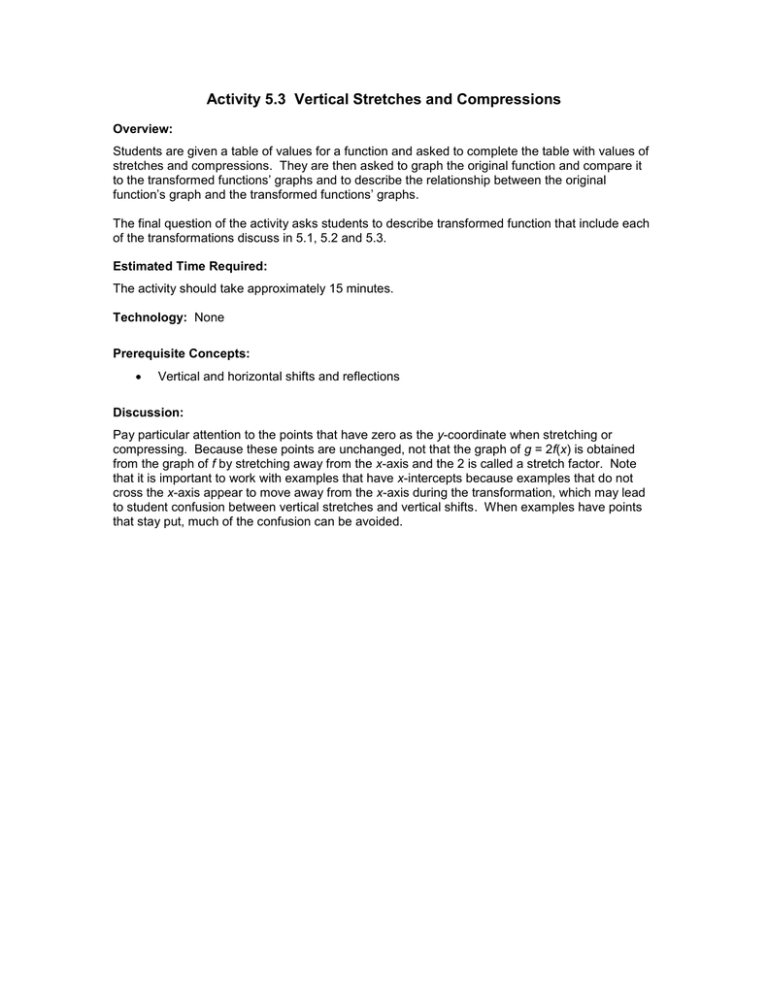
Activity 5.3 Vertical Stretches and Compressions Overview: Students are given a table of values for a function and asked to complete the table with values of stretches and compressions. They are then asked to graph the original function and compare it to the transformed functions’ graphs and to describe the relationship between the original function’s graph and the transformed functions’ graphs. The final question of the activity asks students to describe transformed function that include each of the transformations discuss in 5.1, 5.2 and 5.3. Estimated Time Required: The activity should take approximately 15 minutes. Technology: None Prerequisite Concepts: Vertical and horizontal shifts and reflections Discussion: Pay particular attention to the points that have zero as the y-coordinate when stretching or compressing. Because these points are unchanged, not that the graph of g = 2f(x) is obtained from the graph of f by stretching away from the x-axis and the 2 is called a stretch factor. Note that it is important to work with examples that have x-intercepts because examples that do not cross the x-axis appear to move away from the x-axis during the transformation, which may lead to student confusion between vertical stretches and vertical shifts. When examples have points that stay put, much of the confusion can be avoided. Activity 5.3 Vertical Stretches and Compressions 1. Fill in the values in the table: x -3 -2 3 8 9 f(x) -1 0 5 0 -1 2 f(x) 1 f x 2 By the way, f(x) = 5 – | x – 3 |. 2. Graph f, g(x) = 2 f(x) and h(x) = 1 f x on the same set of axes. 2 3. Describe the relationship between f and g. Between f and h. 4. If you know the graph of f, describe how to get the graph of each of the following functions from the graph of f. f x 4 f x 6 f x 3 f x f x f x 2 1 2 f x 3 1 f x 2 3 f x 4 f x 4 2 f x 4
